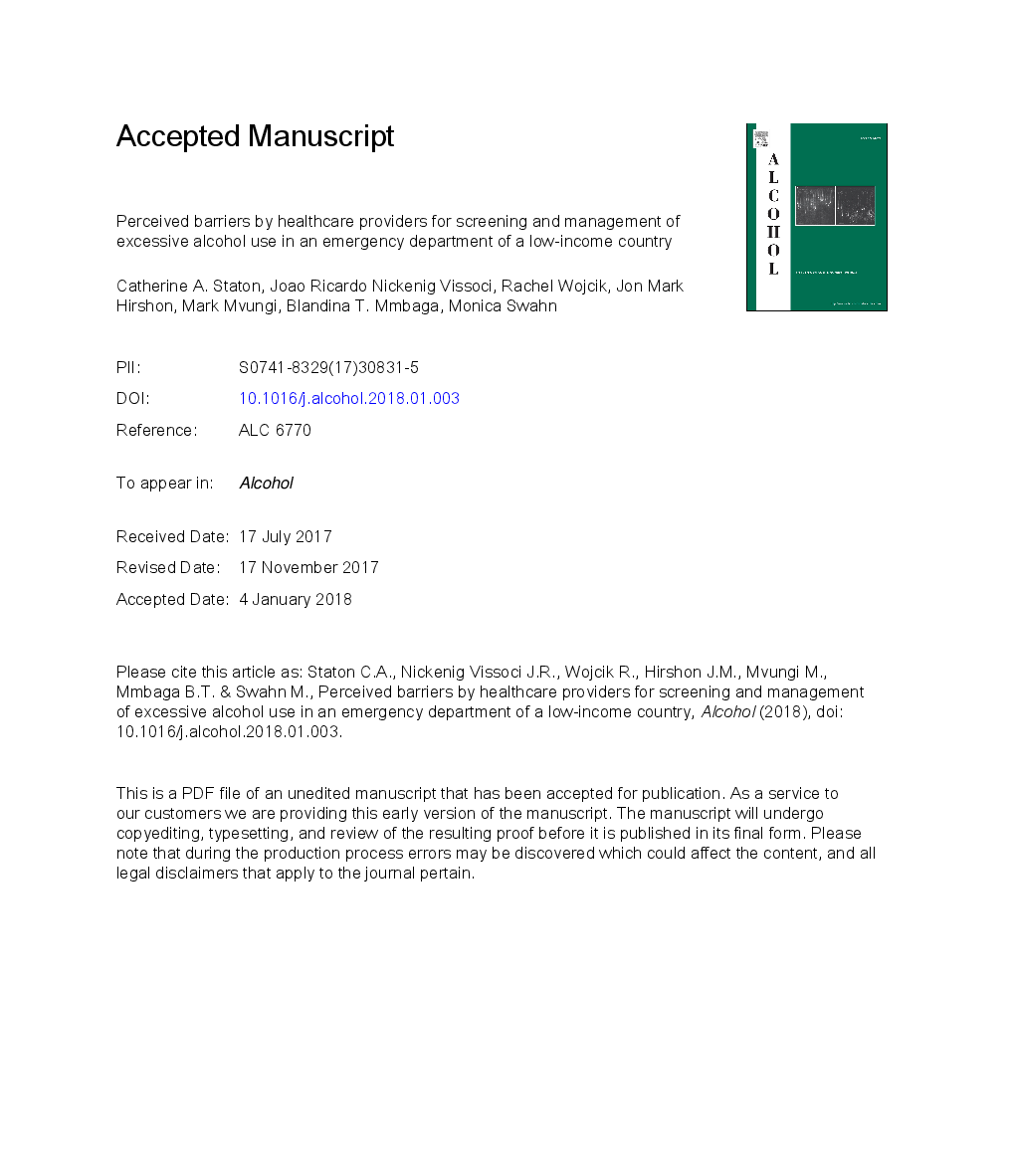ترجمه فارسی عنوان مقاله
موانع درک شده توسط ارائه دهندگان خدمات بهداشتی برای غربالگری و مدیریت مصرف بیش از حد الکل در بخش اورژانس کشور کم درآمد
عنوان انگلیسی
Perceived barriers by healthcare providers for screening and management of excessive alcohol use in an emergency department of a low-income country
| کد مقاله | سال انتشار | تعداد صفحات مقاله انگلیسی |
|---|---|---|
| 153100 | 2018 | 33 صفحه PDF |
منبع

Publisher : Elsevier - Science Direct (الزویر - ساینس دایرکت)
Journal : Alcohol, Available online 8 January 2018
ترجمه کلمات کلیدی
مصرف الکل، بخش اورژانس، مداخله کوتاه استقامت، تحصیلات،
کلمات کلیدی انگلیسی
Alcohol use; Emergency department; Brief intervention; Stigma; Education;

